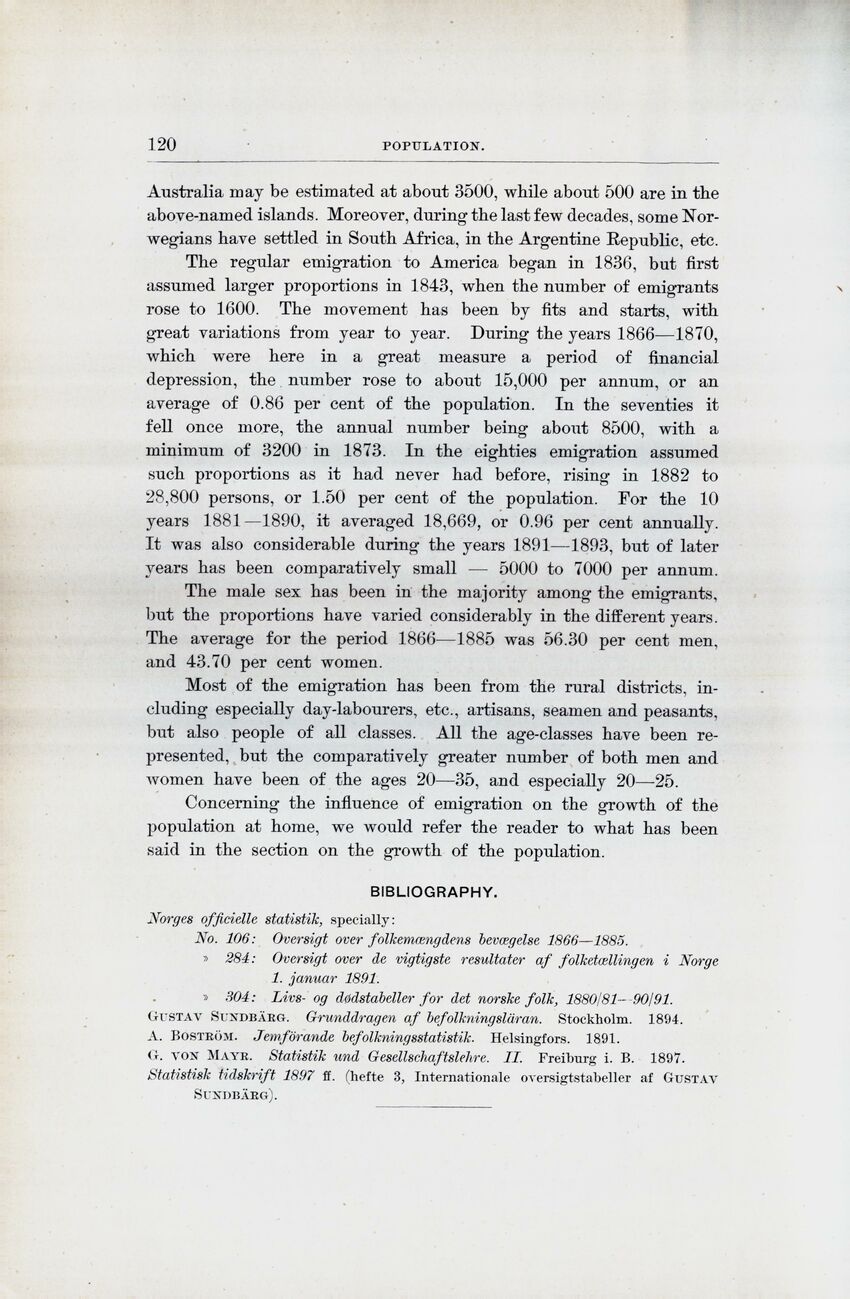
Full resolution (JPEG) - On this page / på denna sida - Population, by G. Amnéus

<< prev. page << föreg. sida << >> nästa sida >> next page >>
Below is the raw OCR text
from the above scanned image.
Do you see an error? Proofread the page now!
Här nedan syns maskintolkade texten från faksimilbilden ovan.
Ser du något fel? Korrekturläs sidan nu!
This page has been proofread at least once.
(diff)
(history)
Denna sida har korrekturlästs minst en gång.
(skillnad)
(historik)
Australia may be estimated at about 3500, while about 500 are in the
above-named islands. Moreover, during the last few decades, some
Norwegians have settled in South Africa, in the Argentine Republic, etc.
The regular emigration to America began in 1830, but first
assumed larger proportions in 1843, when the number of emigrants
rose to 1600. The movement has been by fits and starts, with
great variations from year to year. During the years 1866—1870,
which were here in a great measure a period of financial
depression, the number rose to about 15,000 per annum, or an
average of 0.86 per cent of the population. In the seventies it
fell once more, the annual number being about 8500, with a
minimum of 3200 in 1873. In the eighties emigration assumed
such proportions as it had never had before, rising in 1882 to
28,800 persons, or 1.50 per cent of the population. For the 10
years 1881—1890, it averaged 18,669, or 0.96 per cent annually.
It was also considerable during the years 1891—1893, but of later
years has been comparatively small — 5000 to 7000 per annum.
The male sex has been in the majority among the emigrants,
but the proportions have varied considerably in the different years.
The average for the period 1866—1885 was 56.30 per cent men,
and 43.70 per cent women.
Most of the emigration has been from the rural districts,
including especially day-labourers, etc., artisans, seamen and peasants,
but also people of all classes. All the age-classes have been
represented, but the comparatively greater number of both men and
women have been of the ages 20-35, and especially 20—25.
Concerning the influence of emigration on the growth of the
population at home, we would refer the reader to what has been
said in the section on the growth of the population.
BIBLIOGRAPHY.
Norges officielle statistik, specially:
No. 106: Oversigt over folkemængdens bevægelse 1866—1885.
» 284: Oversigt over de vigtigste resultater af folketællingen i Norge
1. januar 1891.
» 304: Livs- og dødstabeller for det norske folk, 1880/81—90/91.
Gustav Sundbärg. Grunddragen af befolkningsläran. Stockholm. 1894.
A. Boström. Jemförande befolkningsstatistik. Helsingfors. 1891.
G. von Mayr. Statistik und Gesellschaftslehre. II. Freiburg i. B. 1897.
Statistisk tidskrift 1897 ff. (hefte 3, Internationale oversigtstabeller af Gustav
Sundbärg).
<< prev. page << föreg. sida << >> nästa sida >> next page >>